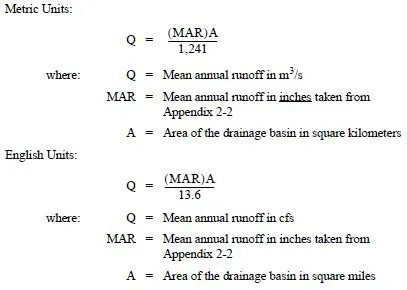This chapter covers the design requirements for water crossings on state highways over fish-bearing waters, in addition to HEC-18, HEC-20, and HEC-23 Volume 1 and Volume 2.See Chapter 3 for the design of non-fish-bearing culverts, and HEC-18, HEC-20, andHEC-23 Volume 1 and Volume 2 for the design of bridges over non-fish-bearing waters,unless local requirements dictate otherwise. Most rivers and creeks in Washington Statecontain one or more species of fish during all or part of the year. This chapter has beenupdated to reflect the requirements for fish passage crossings on WSDOT highwaysfrom current WAC Hydraulic Code Rules; the 2017 USACE, Seattle District, NationwidePermit Regional Conditions; and the 2013 Federal Court Injunction for Fish Passage(Injunction). This chapter is specific to WSDOT projects. For non-WSDOT projects, it isup to the project owner to determine whether the guidance in this chapter is followed orother guidance is followed to obtain project permits and follow state law. WSDOT isactively monitoring completed fish passage projects and will update this chapter as newinformation becomes available. See Section 7-8 for more information.
All fish-bearing water crossings within Washington State must meet the requirements of WAC’s Hydraulic Code Rules and the requirements of the Hydraulics Manual, unless a deviation is approved by the State Hydraulics Office. In Water Resource Inventory Areas (WRIAs) 1 through 23, the design must also meet the requirements of the Permanent Injunction Regarding Culvert Correction. This chapter uses WDFW’s 2013 Water Crossing Design Guidelines (WCDG) as reference (WDFW 2013). Other published manuals and guidelines may be used with the approval of the State Hydraulics Office and permitting agencies.
New bridges and culverts in fish-bearing waters must be designed to meet current fish passage standards and WAC to ensure that they do not hinder fish use or migration. WAC requires a person to design water-crossing structures in fish-bearing streams to allow fish to move freely through them at all flows at which fish are expected to move.
WSDOT and WDFW have cooperated in a Fish Passage Barrier Removal Program since 1991. PEOs can check the WSDOT fish barrier database or contact the HQ Environmental Services Office biology branch to determine whether the project has any fish barriers within its limits and whether the crossing will need to be included as part of the project. WDFW also maintains a database of fish barriers statewide. All water crossings over fish-bearing waters shall be designed by the State Hydraulics Office or by an individual approved by the State Hydraulics Office (see Chapter 1).
Section 7-2 discusses requirements for assessing and documenting existing conditions to design a successful and fish-passable water crossing. Section 7-3 provides a discussion of hydraulic analyses required for the design, and Sections 7-4 and 7-5 discuss the design process, considerations, and criteria. Section 7-6 discusses the structure-free zone (SFZ). Section 7-7 provides guidance on temporary diversions, Section 7-8 describes the WSDOT monitoring process, Section 7-9 explains the performance management process, and Section 7-10 presents a discussion of additional resources. Section 7-11 provides the appendices.
This chapter uses the term “stream designer or stream design engineer(s)” to denote work that either the State Hydraulics Office or the individual approved by the State Hydraulics Office performs and to separate that work from the work that the PEO would do in the rest of the Hydraulics Manual. This chapter assumes that the stream designer has knowledge of WAC, WDFW’s 2013 WCDG, and hydrology and river hydraulics, and, as a result, does not cover every topic in thorough detail. This chapter outlines the process that the State Hydraulics Office follows in designing a stream crossing, and what is expected on WSDOT projects. These designs require a specialty report. Additional requirements about specialty reports are provided in Chapter 1. The template used by WSDOT can be found on WSDOT’s Hydraulics website along with training required to author a specialty report for a water crossing over fish-bearing waters. There is also a report checklist that outlines areas of focus during the specialty report review.
An FPSRD certificate number is required for all authors of any portion of a specialty report. See Table 1-1 for a list of specialty reports and other requirements. An FPSRD certificate number is given to those who have viewed all of the training modules and successfully passed the comprehensive exam. Additional information, training resources, and the point of contact for this training can be found on the WSDOT Hydraulics Training web page. As WSDOT updates the FPSRD training modules a re-certification number is also required. Any updates to this training will be posted on the WSDOT Hydraulics Training web page.
A scour analysis is required for all WSDOT projects or WSDOT-managed infrastructure associated with scour or have a potential to be impacted by scour, such as water crossings, walls, roadway embankments, and other WSDOT infrastructure. A WSDOT SCR number is required for all stream team members that are conducting scour calculations, lateral migration, scour analysis, and reviews as part of or supporting specialty reports. See Table 1-1 for a list of specialty reports and other requirements. A SCR certificate number is given to those who have viewed all the WSDOT Scour Training Workshops and FHWA Bridge Scour Workshop Recordings; completed NHI Course 135046, Stream Stability and Scour at Highway Bridges, and NHI Course 135048, Countermeasures Design for Bridge Scour and Stream Instability; and successfully passed the comprehensive exam. Additional information, training resources, and the point of contact for this training can be found on the WSDOT Hydraulics Training web page. As WSDOT updates the Scour Training modules a re-certification number is also required. Any updates to this training will be posted on the WSDOT Hydraulics Training web page.
The following training courses are required to obtain a scour certification:
• FHWA Bridge Scour Workshop Recordings
• NHI Course 135046, Stream Stability and Scour at Highway Bridges
• NHI Course 135048, Countermeasures Design for Bridge Scour and Stream Instability
